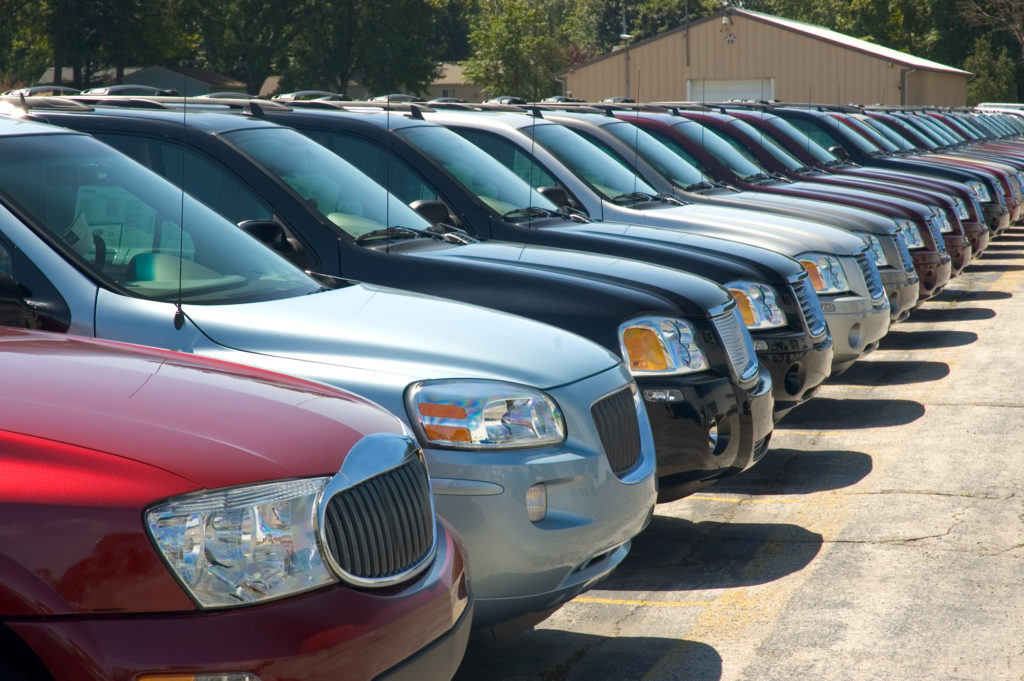There can be a lot of mystery surrounding a used car or a car you inherited. Especially when purchasing a used vehicle, sometimes you may want to know about its history. And because it’s an old car, essentially bought from a stranger, you’re worried you may never know where your car was before you.

But that doesn’t need to be the case. Every car maintains a narrative of its life. It’s called the car’s VIN.
The car’s VIN can even tell you what options a car has.
Contents
What are the options for a car?
A car’s options are all the upgrades added to the vehicle above and beyond what comes as part of the standard package. It could be a larger, more powerful engine. Or it could be a better entertainment system. It could even be disc brakes or leather seats.
Every make and model of car has its list of upgrades or options that prospective car owners can choose from to customize the vehicle. Typically, car manufacturers tend to bunch options into package upgrades, such as sports or luxury packages. You would simply upgrade to that package and get all its possibilities.
How do you find your car options?
The car manufacturer’s website typically lists all the available options on a vehicle. However, that will tell you what options or upgrade packages were available for your make and model of car. It won’t tell you the specs of your specific vehicle.
You need to review the entire car’s history when the vehicle was purchased and built.
To do this, you can use the VIN.
Can I tell what options a car has by the VIN?
You can use the VIN to identify what the car’s options are and everything else about the vehicle. The VIN number will give the most accurate and complete story about any vehicle.
You can receive a full vehicle history report, which is great for used cars, and it also makes a great accessory when you’re at the dealerships or the auto-repair shop. Especially for those that aren’t invested in vehicles in the way a professional might be. The VIN can provide a professional with the specifics of your car that you might not have otherwise known.
What is a car VIN?
The car’s Vehicle Identification Number (VIN) is a unique code to identify a specific vehicle. Essentially, a car’s VIN is equivalent to a fingerprint, as it is the only car with that particular VIN. The VIN is the only thing you need to determine the vehicle you are looking for, even if it is sitting amongst a thousand identical cars.
Along with being listed on the car’s insurance policy and card and the vehicle title and registration, every vehicle has its unique vehicle identification number printed in numerous locations. This is specifically designed to prevent its removal or illegally piecing out the car. These locations include:
- Engine block
- Dashboard at the base of the windshield on the driver’s side
- Door jamb on the driver’s side
- Car frame
- Transmission
- Bumpers
The vehicle identification number comprises 17 numerical and alphabetic characters, which distinguish a car from every other vehicle and create a full vehicle history report of the vehicle, from production to the present moment.
A vehicle history report is a chronological history book of the car’s life. The details of the complete vehicle history report, or VIN report, include the vehicles:
- Specific features
- The car manufacturer data, also called the world manufacturer identifier
- Registration history
- Make and model year
- Exact specifications; such as engine model body style or emissions specifications
- Reported thefts
- All of the vehicle’s repair history
- Recall history
- Warranty information and claims
- Insurance coverage information

How do you get a VIN report?
To know what information your VIN holds, you need to run an independent vehicle history search to retrieve a VIN report. You can get a VIN report via a paid service, but several vehicle history reports websites will do it for free.
Using a free website is very straightforward, and you can get your report in four easy steps.
Step 1
Get the VIN
- Find the VIN number on your car and write it down exactly as it appears.
Step 2
Head to the internet
- Once you have the VIN number, go to your computer. The car manufacturer’s website typically offers its own VIN decoder tool. So, that is the best place to start. If not, there are several free VIN lookup services you can use, such as the one provided by the United States Department of Transportation.
Step 3
Conduct a search
- There is a search inquiry on the website that typically offers a choice between searching by VIN or by license plate number. Choose VIN.
Step 4
Get the report
- Enter the VIN, hit enter, and the site will generate the VIN report for the number you submitted. The vehicle history report should answer all of your questions.
How do I find out what options my car was ordered with for free?
Instead of using online free VIN lookup services, there is another free option that you can choose to use. Simply read the VIN yourself. To do this, you need a VIN decoder.
But, to begin with, it helps to understand better what the VIN is made up of.
How to decode the VIN (DIY)
The VIN may seem complicated or mysterious to read, but it is not that difficult. The 17 characters break down into seven groups, each having its representation of some fact about the car.
These groups are:
- Where the car was manufactured (1st character)
- Who the manufacturer was (2nd and 3rd characters)
- Vehicle profile; brand, engine size, type (4th to 8th characters)
- A manufacturer security code (9th character)
- The car’s model year (10th character)
- Plant where the vehicle was assembled (11th character)
- Serial number of the car (12th to 17th characters)
- If the car is a flexible fuel vehicle (combination of 2nd, 3rd, and 8th characters. Not applicable to all VINs)
So, you simply read only the characters in the group about which you need the information. A VIN decoder is all you need to make sense of these characters and groupings.
Typically, in identifying a car’s options, you only need to be concerned with the fourth through eighth characters in the VIN number. You do not need to be intimidated by the sound of using a VIN decoder and doing this yourself, and it is also as easy as 1,2,3 and 4.
Step 1
Get the VIN
- This step is still the same. Record the VIN number exactly how it appears on the car.
Step 2
Head to the internet
- You will still need a VIN lookup tool or a character legend to know what each character means. The car manufacturer’s website is the best place to contact for this.
Step 3
Examine the VIN
- For example, the first character tells you where the car was manufactured. Cars made in the United States begin with either 1, 2, or 4. Germany is designated with a W. There is a list of these codes on Wikipedia.
Step 4
Focus on characters 4 to 8
- Again, for car options, typically, characters 4 to 8 are all you need to be concerned with. So, simply use the information to decode that set of characters, and you have your information.
Can you add options to a new car?
Before purchasing a new car, you can add any or all options that the car manufacturer’s model specs permit you to. You simply work with the sales representative and identify what exactly you want your new car to have, and they will order it as you wish.
Once a car is purchased, absolutely anything you add to it is considered aftermarket, and you would need to buy them from third-party companies and have them installed by one.
Only the car you purchased through the dealership is covered by the warranty that you also received and or purchased (in the event you added on to the standard contract) when you bought and paid for your new car.
Adding things to a new car aftermarket could void that warranty in some cases.
Why is it essential to find out what options your car was ordered with?
There are several reasons why knowing what options your car was ordered could be vital to you. For example, if the car’s engine was upgraded, that could make a big difference regarding what your insurance premium may turn out to be.
Also, if you wanted to sell the car, the car’s options could increase the vehicle’s value. Thus getting you more money than you initially thought you could get for the vehicle.














